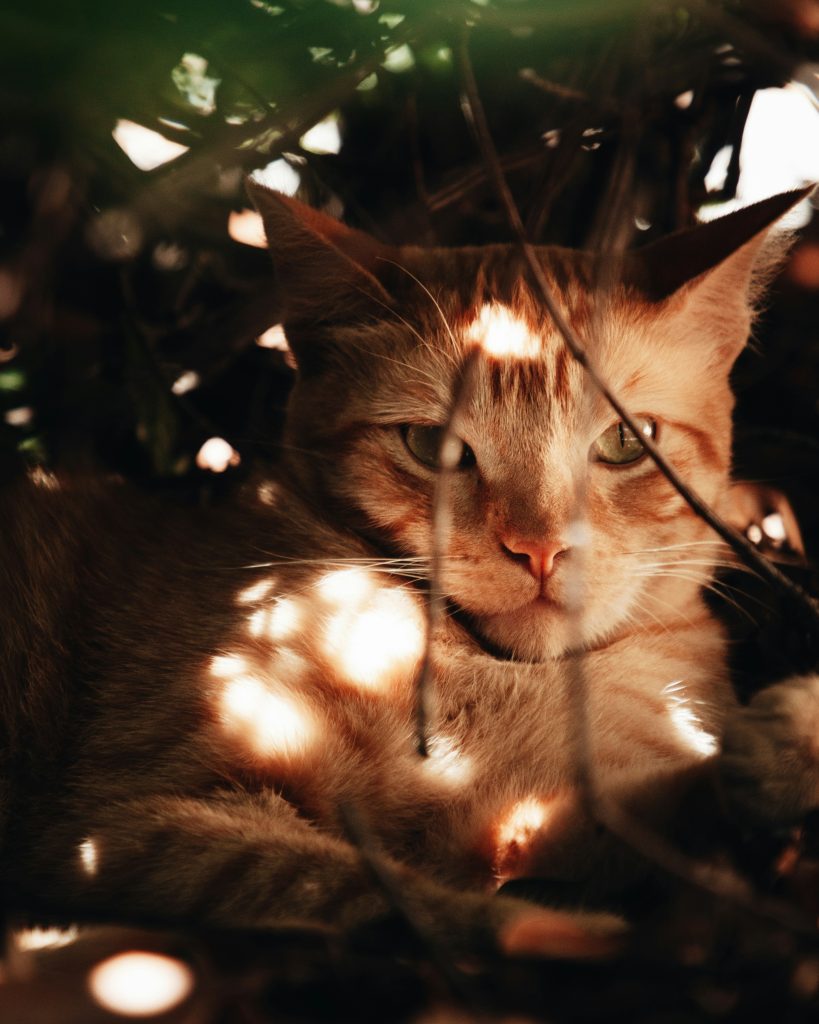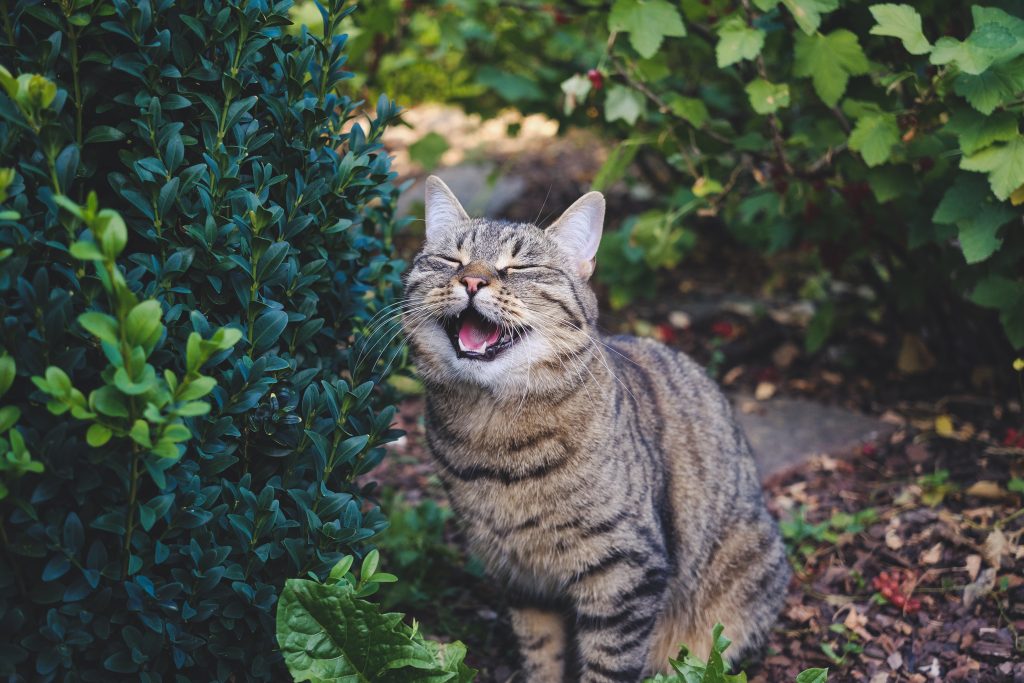When is it too hot for my cat?
Summer is coming and warm days are expected again. So enjoy! Cats, like humans, can sometimes suffer from this heat. Read here when your cat is feeling too hot and what you can do to prevent and remedy it.
Cats love warmth
Cats love warmth. It is not without reason that they often seek a nice spot on the heater or in the sun. They can generally tolerate heat very well, but beware: it can sometimes be too hot for cats.
In fact, cats can barely sweat. The only place they can sweat is from their foot pads. So they don’t get rid of their heat very easily. Contrary to what many people think, a cat’s fur can help against heat. This is because the fur acts as an insulator. In winter it keeps heat in, and in summer it keeps heat out. Mother Nature has thought about that very well.
Like humans, cats’ skin can be burned by the sun. White cats or cats with white ears are particularly susceptible to sunburn. You can apply sunscreen specifically for pets to the ears. Also pay attention to the nose when doing this. In white cats, these are often very thin-haired and therefore sensitive to sunscreen. When the sun is strongest, we advise you to keep your cat inside if possible.
When is my cat too hot?

If a cat is too hot, they may show the following symptoms:
- Lethargic
- Restlessness (not being able to find a place to lie quietly)
- Reduced appetite
- Drooling
- Fever (above 39 degrees Celsius)
- Accelerated breathing
Such symptoms may also indicate another (underlying) condition. When in doubt, always contact us, we are ready to answer your questions. This can be done by phone or via Whatsapp.
When is my cat overheated?
Overheating or heat shock is one degree more severe. Make sure you always intervene when you suspect overheating in your cat. It is fortunately not common, but you should be alert to it. For example, if your cat gets trapped on a patio without shade or a hot attic, overheating is lurking.
Symptoms of overheating are:
- Lethargic
- Disorientation
- Red mucous membranes
- Vomiting and/or diarrhea
- Drooling
- Fever
- Panting
Note: When your cat is panting, you should call for help immediately. Your cat is then already in a critical condition. Cats do not pant to get rid of heat, as dogs do.
What to do when a cat is overheated?
If your cat has heat shock, it is essential to act as quickly as possible.
- Call a veterinarian immediately; overheating can be life-threatening
- Make sure your cat can cool down: put lukewarm (not ice-cold) wet towels under the cat or against the belly – never on the cat, this is counterproductive; also wet the feet and ears
- Too much temperature change can put your cat into shock; therefore, never use ice cold water, do not throw a bucket of water over your cat at once and do not put your cat under the faucet
- Let your cat drink small bits of lukewarm water; note: do this only if your cat is conscious
At-risk groups
Some cats are more likely or more affected by heat. Therefore, pay extra attention to the following:
- Cats with short snouts
- Older cats and kittens
- Cats that are overweight
- Cats with heart disease and/or lung disease
Tips for cats in hot weather
Under the motto that every little bit helps, we provide tips below to prevent your cat from overheating – or at least minimize the chances of it.
Limit physical activity
On hot days, cats often start moving less by themselves. Leave it that way. So postpone playing until the cooler moments of the day. This will reduce the chance of overheating.
Be careful with open windows
In the summer, you probably ventilate your home often. This is important for both you and your cat. Unfortunately, it sometimes happens that cats fall out of windows from a great height or get trapped in tilt-up windows. There are special protections for cats that you can place between the opening of the tilt window so that they cannot get trapped.
Provide adequate shade and cooling
Create plenty of shady spots that your cat can seek out on its own. For example, open the door to the bathroom or basement; it often stays cool there. Also make sure that room temperature drinking water is always available. If necessary, place bowls in several places. It may also be nice for your cat to have a special cooling mat that he/she can lie on.
Grooming
A cat’s coat acts as an insulator, both against heat and cold. By brushing your cat regularly, the undercoat becomes thinner and the insulation works better. This is especially important for cats with long coats. However, never just shave your cat. If you are considering it, first consult with your veterinarian or a professional groomer if this is wise to do with your cat.
Did you know that cats can be encouraged to cool themselves off?
You can do this, for example, through water games. Now cats are generally not fond of water, but this way it can still be fun. For example, you can put ice cubes or fake fish in a tub of water. As the cats fish for it, they cool their paws in the water.

Do you suspect your cat is too hot or even overheated? Then don’t hesitate and make an appointment right away.
Find out more here
Hooray! A new kitten!
Traveling with your cat
Collecting urine
Hairballs
When is it too hot for my cat?
When is it too cold for my cat?
How do I give my cat tablets?
How do I administer ointment or drops to my cat?
Taking my cat to the vet
Clipping nails
Stress in cats
Brushing teeth
Poisoning
Fear of fireworks
Caring for an older cat
Putting your cat to sleep

